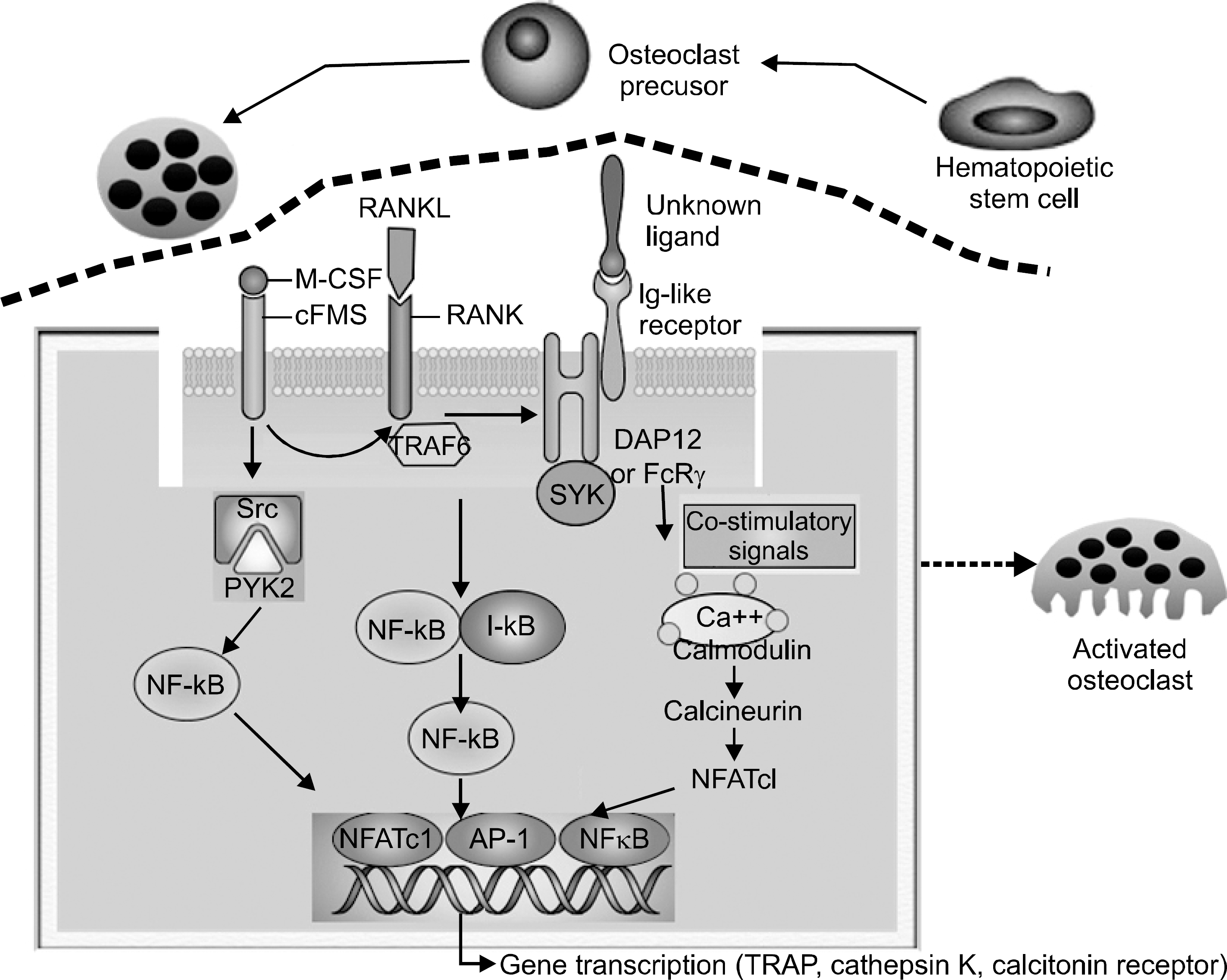References
1. Walsh NC, Crotti TN, Goldring SR, Gravallese EM. Rheumatic diseases: the effects of inflammation on bone. Immunol Rev. 2005; 208:228–51.

2. Takayanagi H. New immune connections in osteoclast formation. Ann N Y Acad Sci. 2010; 1192; 117–23.

3. Theill LE, Boyle WJ, Penninger JM. RANK-L and RANK: T cells, bone loss, and mammalian evolution. Annu Rev Immunol. 2002; 20:795–823.

4. Takayanagi H. Osteoimmunology: shared mechanisms and crosstalk between the immune and bone systems. Nat Rev Immunol. 2007; 7:292–304.

5. Humphrey MB, Lanier LL, Nakamura MC. Role of ITAM-containing adaptor proteins and their receptors in the immune system and bone. Immunol Rev. 2005; 208:50–65.
6. Edwards JR, Mundy GR. Advances in osteoclast biology: old findings and new insights from mouse models. Nat Rev Rheumatol. 2011; 7:235–43.

7. Ji JD, Kim TH, Lee B, Choi SJ, Lee YH, Song GG. Expression of osteoclastogenesis-related genes in rheumatoid arthritis synovial macrophages. J Rheum Dis. 2011; 18:11–8.

8. Kim HR, Kim KW, Jung HG, Yoon KS, Oh HJ, Cho ML, et al. Macrophage migration inhibitory factor enhances osteoclastogenesis through upregulation of RANKL expression from fibroblast-like synoviocytes in patients with rheumatoid arthritis. Arthritis Res Ther. 2011; 13:R43.

9. Mahoney DJ, Swales C, Athanasou NA, Bombardieri M, Pitzalis C, Kliskey K, et al. TSG-6 inhibits osteoclastic activity via an autocrine mechanism and is functionally synergistic with osteoprotegerin. Arthritis Rheum. 2011; 63:1034–43.
10. Kalliolias GD, Zhao B, Triantafyllopoulou A, Park-Min KH, Ivashkiv LB. Interleukin-27 inhibits human osteoclastogenesis by abrogating RANKL-mediated induction of nuclear factor of activated T cells c1 and suppressing proximal RANK signaling. Arthritis Rheum. 2010; 62:402–13.




 PDF
PDF ePub
ePub Citation
Citation Print
Print



 XML Download
XML Download